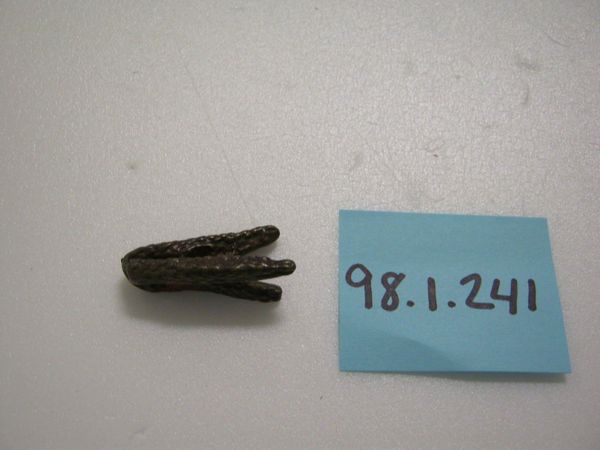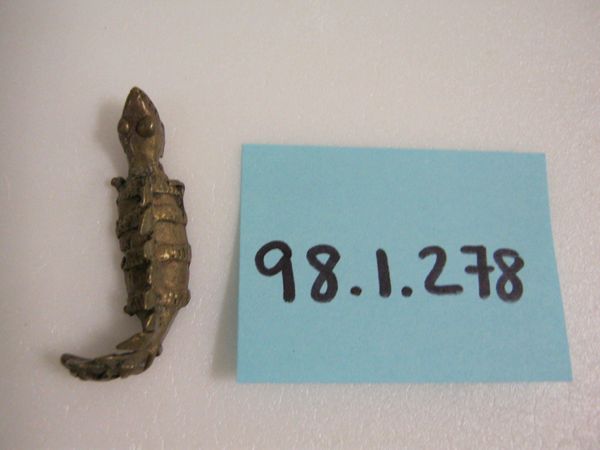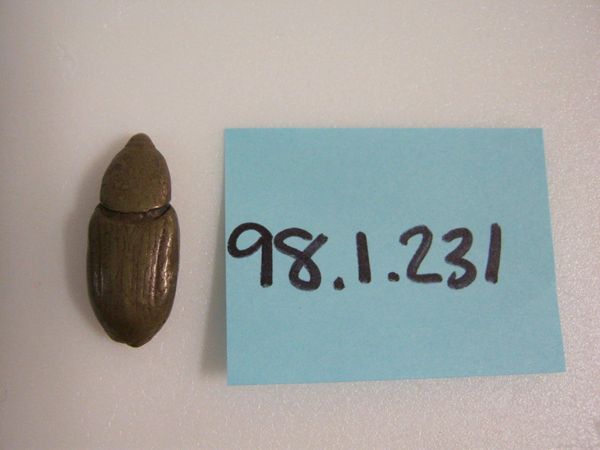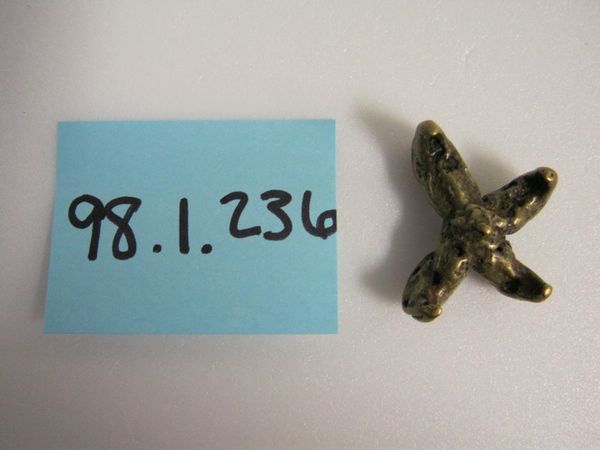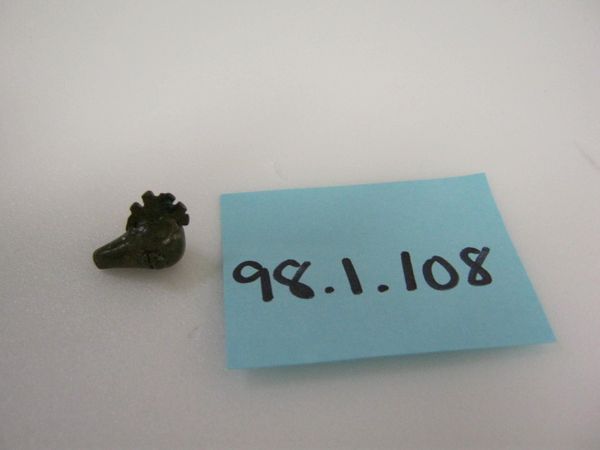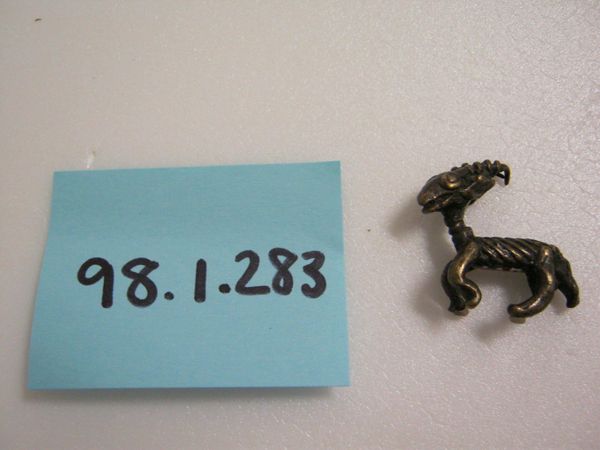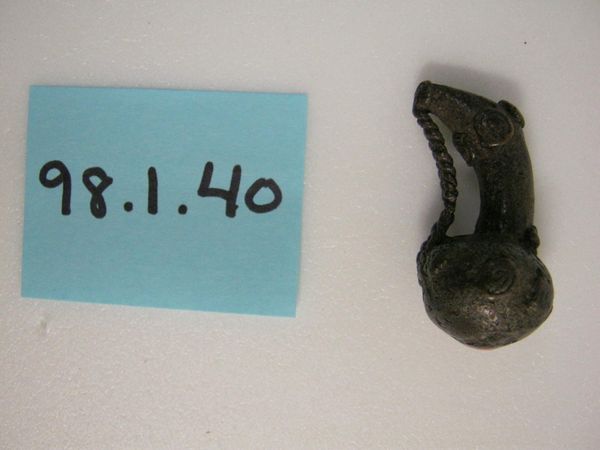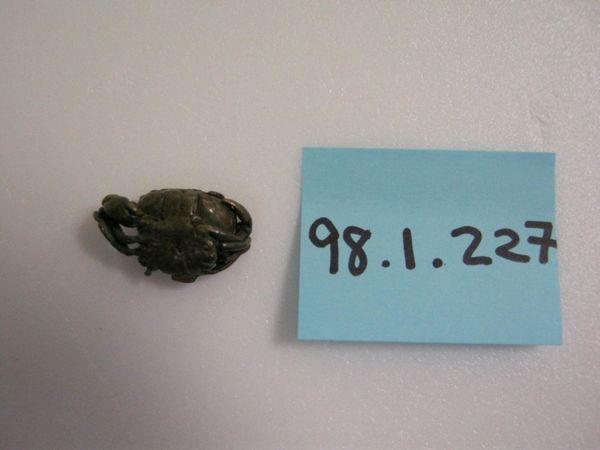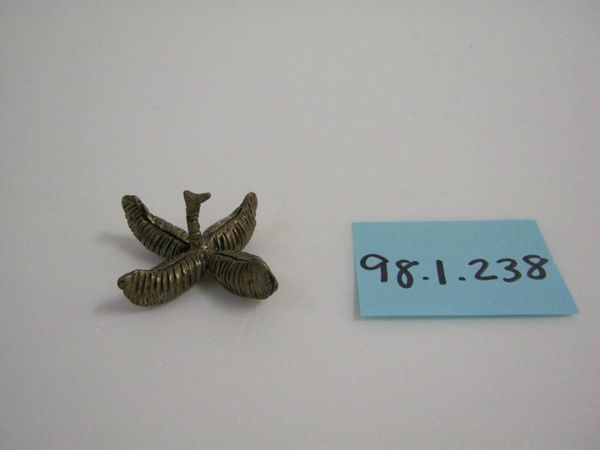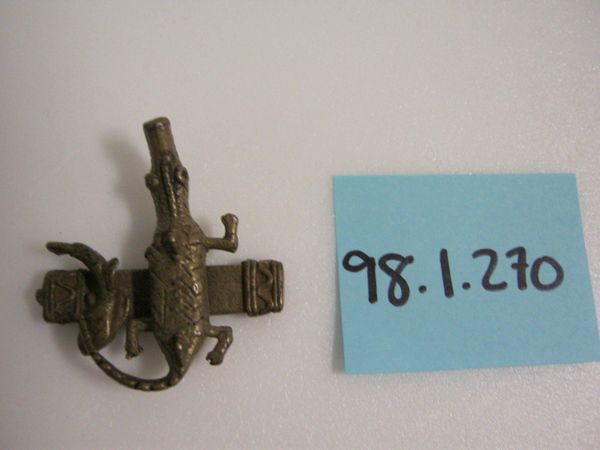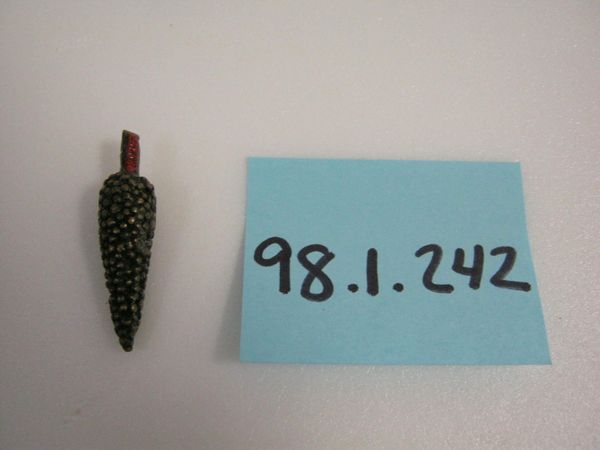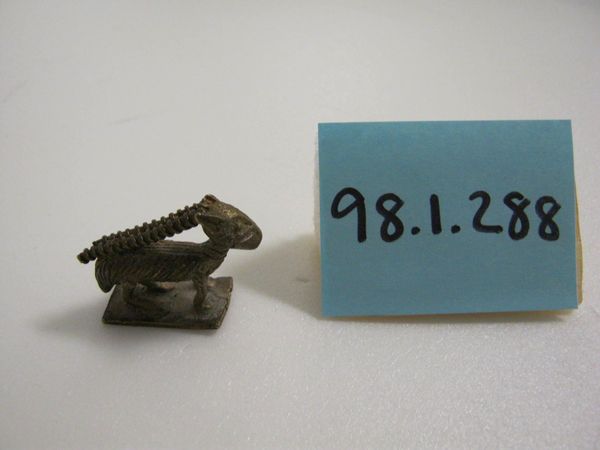![Goldweight [Locust] by Akan](/_next/image?url=https%3A%2F%2Fd2w8kbdekdi1gv.cloudfront.net%2FeyJidWNrZXQiOiAiYXJ0ZXJhLWltYWdlcy1idWNrZXQiLCAia2V5IjogImFydHdvcmtzLzY3MzA0Yzc4LTdjMjktNDE1MS05NWQ2LWJjMzQ4NGE1MDcxYS82NzMwNGM3OC03YzI5LTQxNTEtOTVkNi1iYzM0ODRhNTA3MWFfZnVsbC5qcGciLCAiZWRpdHMiOiB7InJlc2l6ZSI6IHsid2lkdGgiOiAxOTIwLCAiaGVpZ2h0IjogMTkyMCwgImZpdCI6ICJpbnNpZGUifX19&w=3840&q=75)
brass, sculpture
brass
sculpture
Dimensions: 1 1/4 x 3/8 in. (3.18 x 0.95 cm)
Copyright: Public Domain
Curator: This small but intriguing piece is an Akan goldweight from the 19th or 20th century, specifically representing a locust. It's part of the collection at the Minneapolis Institute of Art and made of brass. Editor: My initial reaction is, “Wow, something so functional can be so beautifully rendered!” It’s rough-hewn, almost like a fossil. Curator: Indeed. These goldweights, though functional for measuring gold dust, also served as a form of visual communication in Akan society. Their production and use were deeply embedded in the social and economic structures of the time. Editor: How so? Who was producing them, and how were they used in broader market practices? Curator: Usually made by local artisans working within Akan communities, the production involved the lost-wax casting method. Their forms, like this locust, conveyed proverbs, social commentaries, and moral lessons, essential elements in the economic and cultural life of the Akan people. Editor: So the choice of a locust is deliberate. Insects often appear as metaphors in folklore...was this locust referencing greed or some other societal ill, maybe crop devastation and famine fears? Curator: Possibly. The locust could represent destructive forces but also perseverance—locusts appear in great numbers, overcoming obstacles. Interpretation depends on the context and the user. Their existence underscores a fascinating link between material culture and social governance. Remember, imagery held incredible power. Editor: Looking at it in a museum setting today...the display really changes the object's life. Here, it exists solely for contemplation, severed from its original labor and transactional setting. That reframing is significant. Curator: Absolutely, the museum environment alters its function, shifting from a unit of economic measure to an aesthetic object. The display highlights its artistry and historical significance but perhaps obscures its original intent and circulation. Editor: Well, thinking about the artist’s labor, and how this small form carries so much significance still…It certainly prompts you to think about production, value, and meaning. Curator: I agree. I think this piece prompts valuable questions about trade, artistry, and the shaping influence of objects in our history.
Comments
No comments
Be the first to comment and join the conversation on the ultimate creative platform.
